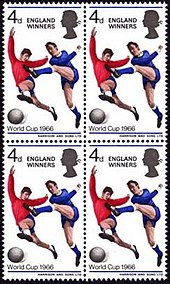
The 1966 FIFA World Cup Final was a football match played at Wembley Stadium, London, on 30 July 1966 to determine the winner of the 1966 FIFA World Cup, the eighth FIFA World Cup. The match was contested by England and West Germany, with England winning 4–2 after extra time to claim the Jules Rimet Trophy. It was the first – and to date only – occasion that England has hosted or won the World Cup. This remains England's only major tournament win and last final at a major international football tournament for 55 years, until 2021 when the nation reached the UEFA Euro 2020 Final at the new Wembley Stadium.

This is an overview of the postage stamps and postal history of Australia.

The Stanley Gibbons Group plc is a company quoted on the London Stock Exchange specialising in the retailing of collectable postage stamps and similar products. The group is incorporated in London. The company is a major stamp dealer and philatelic publisher. The company's philatelic subsidiary, Stanley Gibbons Limited, has a royal warrant of appointment from Queen Elizabeth II.

James Alexander Mackay was a prolific Scottish writer and philatelist whose output of philatelic works was rivalled only by Fred Melville. He was described by John Holman, editor of the British Philatelic Bulletin, as a "philatelic writer without equal" but his reputation was damaged by a conviction for theft from the British Museum early in his career, which cost him his job there, and multiple accusations of plagiarism.

In philately, a forerunner is a postage stamp used before a region or territory issued stamps of its own. The term also includes stamps of the political predecessors of a country. For instance stamps of the state of Western Australia are forerunners of Australia today and stamps of the British Mandate for Palestine are forerunners of modern Israel.

A stamp dealer is a company or an individual who deals in stamps and philatelic products. It also includes individuals who sell postage stamps for day to day use or revenue stamps for use on court documents. Stamp dealers who sell to stamp collectors and philatelists are of many kinds and their businesses range from small home operations to large international companies.
The United Kingdom, known in philatelic circles as Great Britain, released many commemorative stamps in the 1970s.
Commemorative stamps, postage stamps issued to honor or commemorate a place, event or person, have been released by Great Britain since 1924. Several sets were released during the decade of the 1990s.
A graphite lined stamp is a postage stamp on which vertical lines of electro-conductive graphite are printed on the reverse. Graphite lined stamps were used in the United Kingdom from 1957 to 1960 as an experiment in the automation of mail sorting.

In philately a cut-out is an imprinted stamp cut from an item of postal stationery such as a postal card, letter sheet, aerogramme or wrapper that may have been used as a normal stamp.

In philately a railway stamp is a stamp issued to pay the cost of the conveyance of a letter or parcel by rail.
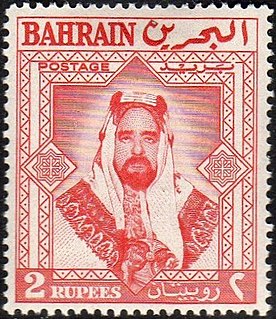
Bahrain first used the postage stamps of British India before eventually issuing its own stamps in 1960.
This is a survey of the postage stamps and postal history of Brunei.

This is a survey of the postage stamps and postal history of Ghana, known as the Gold Coast before independence.
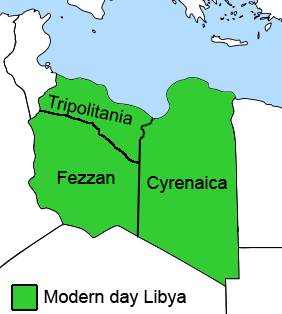
This is a survey of the postage stamps and postal history of Cyrenaica, now part of Libya.
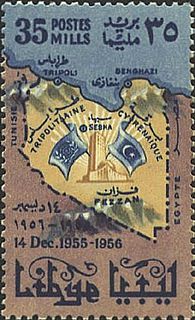
This is a survey of the postage stamps and postal history of Libya. Libya is a country located in North Africa. Bordering the Mediterranean Sea to the north, Libya lies between Egypt to the east, Sudan to the southeast, Chad and Niger to the south, and Algeria and Tunisia to the west.
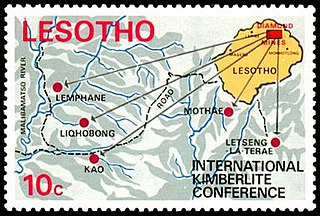
This is a survey of the postage stamps and postal history of Lesotho, formerly known as Basutoland.

The Postal Union Congress (PUC) £1 stamp is one of a series of postage stamps of Great Britain issued in 1929. It is one of the classics of British philately and has been described as one of the most beautiful British stamps ever issued. The stamp was only the second British commemorative stamp to be issued. The first were the British Empire Exhibition postage stamps of 1924–25.

This is a survey of the postage stamps and postal history of Newfoundland.
